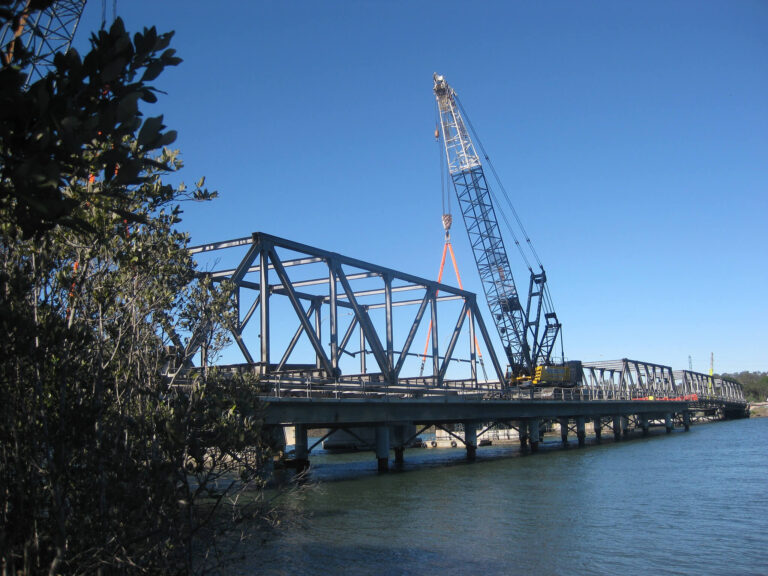CONTRACTOR ROLE
Principal Contractor
CLIENT
Roads and Maritime Services (RMS)
LOCATION
Newcastle, NSW
SERVICES
Demolition
Remediation & Hazmat Removal

The Tourle Street Bridge, a significant structure spanning the South Arm of the Hunter River in Newcastle, NSW, was earmarked for demolition as part of infrastructure upgrades in the region. The bridge, composed of seven steel through-truss spans with lengths varying from 28 to 44 metres, supported a reinforced concrete deck 9 metres wide between kerbs. DECC was engaged as the Principal Contractor following an Early Contractor Involvement (ECI) process with the Roads and Maritime Services (RMS). The project involved the complete demolition of the bridge's superstructure, including the removal of benoto piles and timber falsework piles to a depth of one metre below the riverbed.
Demolition of Bridge Superstructure: DECC was responsible for the demolition of the entire 300-metre bridge, including approximately 800 tonnes of steel. This required the dismantling of the seven steel through-truss spans, reinforced concrete deck, and supporting structures. The superstructure was systematically deconstructed, with trusses and concrete sections being carefully removed and processed.
Construction of Temporary Bridge: A key element of the project was the construction of a temporary bridge structure parallel to the Tourle Street Bridge. This temporary bridge, designed as a modular construction with a precast concrete deck and steel headstocks, served as a working platform for the demolition. The structure allowed for safe and efficient access to the bridge, eliminating the need for barges and enabling the use of dual crane lifts.
Underwater Pile Cutting: The demolition process included the innovative use of a custom-built underwater pile cutter. This device, equipped with an internal diamond-bladed wire, was designed to cut benoto piles at one metre below the riverbed. The pile cutter’s design eliminated the need for divers, enhancing safety and efficiency during the underwater cutting operations.
Sediment Control: DECC implemented strict environmental controls throughout the project, including the use of a purpose-built sedimentation box. This device allowed for the containment of slurry generated during the saw-cutting of concrete piers, ensuring that all cutting operations were conducted within a controlled environment to minimise environmental impact.
Hydraulic Shear for Steel Cutting: The demolition strategy also included the use of a custom-built hydraulic shear attachment, which was employed to cut through the steel trusses. This method eliminated the need for oxycutting, reducing the risk of fire and ensuring a safer working environment.